Simon Lever Learning Community presents: Tax Planning Tips for 2018

Background:
The tax law for individuals changed substantially for 2018 (and thru 2025). Gone are significant itemized deductions… “Bye, state and local tax deduction for amounts greater than $10,000.”
Gone are your personal exemptions for your children and dependents. In place of these reductions, the standard deduction was increased to $24,000 for married couples filing joint and $12,000 for singles.
Issue: Charitable Giving.
One area Americans are struggling with is the tax impact on their charitable giving. Taxpayers who are now using the new standard deduction might consider reducing their charitable donations since there is no tax benefit. But consider this planning idea—bunching charitable giving by using a donor-advised fund.
What is a donor-advised fund?
A donor-advised fund allows donors to make a charitable contribution, receive an immediate tax benefit and then recommend grants from the fund over time. The fund may be a separate account that is opened by the individual (donor) or an existing account that is maintained and operated by a local nonprofit or money-management firm which is called a sponsoring organization. Once the donor makes the contribution the organization has legal control over it. However, over time the donor may recommend grants to charities that they wish to support. Depending on the size of your donor-advised fund, assets may be invested to allow further growth within the fund.
Some of the sponsoring organizations do charge an administrative fee. Also, you may lose some flexibility in determining the charity with a sponsored donor-advised fund.
What is meant by bunching?
Bunching just means saving up cash and other appreciated assets (stocks that have risen in value are a good choice) and funding the donor-advised fund with a large lump sum in one year. Using appreciated assets like stock works great because you will avoid paying capital-gains tax and get the charitable deduction for the full value of the asset.
“How do I make this work?”
To execute this technique, directly contribute an amount from your personal checking to the charity and the remaining savings and/or assets to the donor-advised fund in the year of “bunching”. Your itemized deductions will increase this year and should be the better choice for tax savings. Two actions occur the following year. One, the donor-advised fund makes a charitable contribution and, two, you take the new higher standard deduction. In the end, the net cash flow to the charity remains the same.
Summary:
The idea is that if you make the same contribution every year and use the standard deduction you may lose the tax benefit of charitable giving. By concentrating your charitable giving in certain years you will receive a greater tax benefit while still giving the same amount to your favorite causes. Thus, over a two-year period, you are receiving greater tax deductions than if you give equally each year.
Other links:
Internal Revenue Service https://www.irs.gov/charities-non-profits/charitable-organizations/donor-advised-funds



